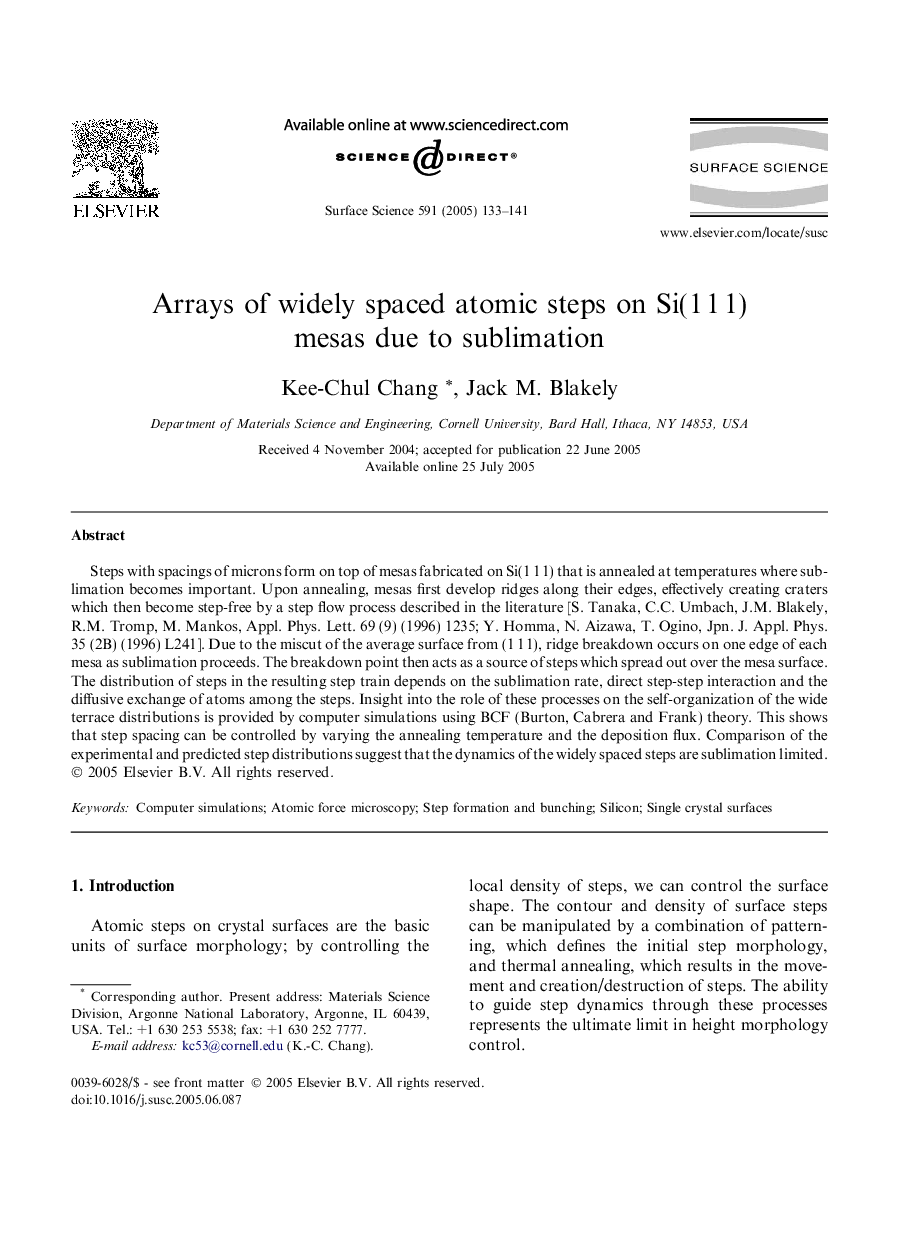| Article ID | Journal | Published Year | Pages | File Type |
|---|---|---|---|---|
| 9594594 | Surface Science | 2005 | 9 Pages |
Abstract
Steps with spacings of microns form on top of mesas fabricated on Si(1Â 1Â 1) that is annealed at temperatures where sublimation becomes important. Upon annealing, mesas first develop ridges along their edges, effectively creating craters which then become step-free by a step flow process described in the literature [S. Tanaka, C.C. Umbach, J.M. Blakely, R.M. Tromp, M. Mankos, Appl. Phys. Lett. 69 (9) (1996) 1235; Y. Homma, N. Aizawa, T. Ogino, Jpn. J. Appl. Phys. 35 (2B) (1996) L241]. Due to the miscut of the average surface from (1Â 1Â 1), ridge breakdown occurs on one edge of each mesa as sublimation proceeds. The breakdown point then acts as a source of steps which spread out over the mesa surface. The distribution of steps in the resulting step train depends on the sublimation rate, direct step-step interaction and the diffusive exchange of atoms among the steps. Insight into the role of these processes on the self-organization of the wide terrace distributions is provided by computer simulations using BCF (Burton, Cabrera and Frank) theory. This shows that step spacing can be controlled by varying the annealing temperature and the deposition flux. Comparison of the experimental and predicted step distributions suggest that the dynamics of the widely spaced steps are sublimation limited.
Keywords
Related Topics
Physical Sciences and Engineering
Chemistry
Physical and Theoretical Chemistry
Authors
Kee-Chul Chang, Jack M. Blakely,
